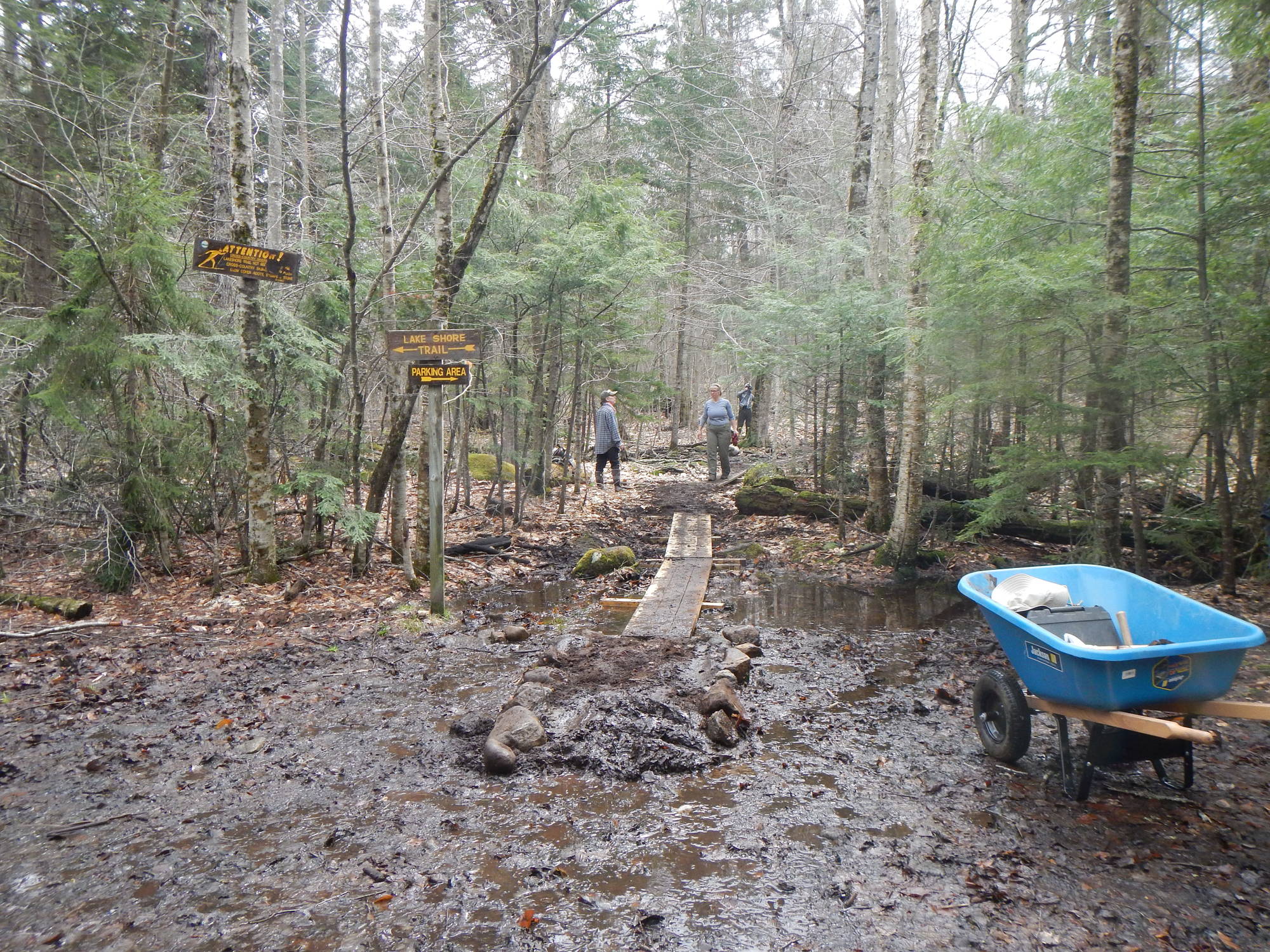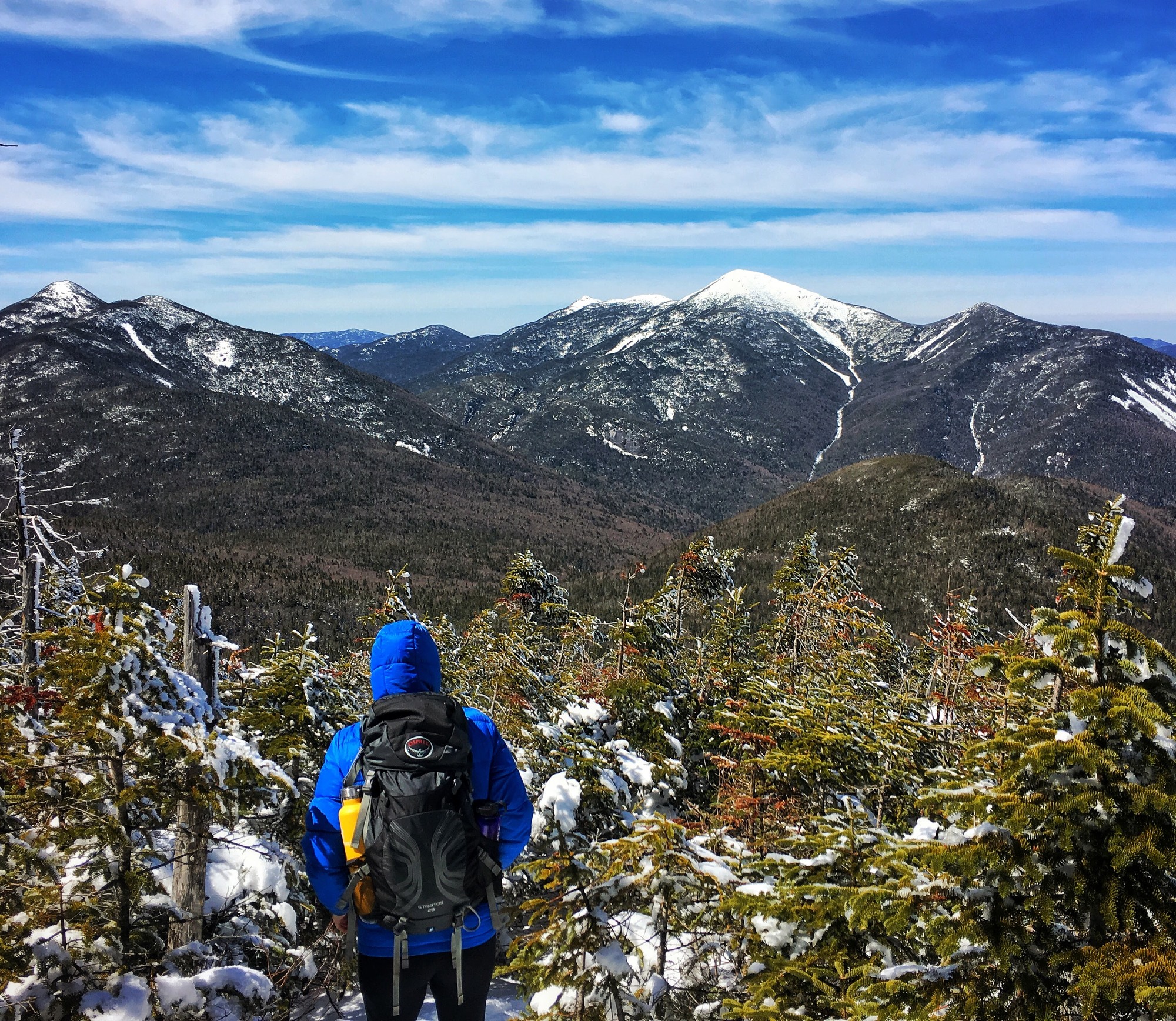|
Have a safe and enjoyable outdoor recreational experience on the lands and waters of the Adirondacks. Properly plan and prepare for your outdoor adventure. Minimize the impact on the mountains and forests, rivers and brooks, ponds and lakes, and the wildlife of the Adirondacks.
Check the Backcountry Information for the Adirondacks web pages for more detailed information on access, outdoor recreation infrastructure, and conditions for those planning to recreate in the Adirondacks. This bulletin provides only the most recent notices.
Would you like your photo shared in our weekly bulletin? Send us your photos that represent current backcountry conditions in the Adirondacks. Send in your photos with your name and photo location/brief description to Info.R5@dec.ny.gov or simply tag #NYSDEC on Instagram.
PLAN
Weather forecasts and conditions can and do change quickly. Check the current National Weather Service Forecast and be prepared for the forecasted conditions or change your plans.
- Varying trail conditions: Ice is still present on all trails in middle and high elevations. Carry crampons on all hikes. Plan to encounter a mix of mud and ice at lower
 elevations. There have been many ice related accidents reported on trails and mountain slopes. Please heed ice warnings to ensure your safety on all trails. elevations. There have been many ice related accidents reported on trails and mountain slopes. Please heed ice warnings to ensure your safety on all trails.
-
Mud: With warming temperatures at low elevations, trails have begun to muddy. Walk through the mud, not around. This will avoid widening the trail, trampling trailside vegetation and help to protect fragile wildlife habitats. Wear waterproof hiking boots and gaiters to ensure comfort and safety while hiking through mud.
-
Emergency Situations: If you get lost or injured; keep calm and stay put. If you have cell service, call the DEC Forest Ranger Emergency Dispatch (518-408-5850). Stay warm and dry by separating yourself from the wet snow with a thicker layer on the ground such as your pack. Protect yourself from the elements by building a shelter with items around you and in your pack. Use a space blanket for extra warmth.
PREPARE
Properly prepare to better ensure a safe and enjoyable winter recreation experience.
-
Layering for spring-like temperatures: Temperatures at the trail head will vary from temperatures at your destination. Higher elevations and exposed summits can have significantly colder temperatures than the base of the mountain. Pack extra non-cotton, wind protectant layers and be sure to use them once exposed or feeling colder to help prevent hypothermia.
- Paddlers: Always wear a personal flotation device (PFD) (PFD’s are required before May 1st). Water temperatures are cold. A person in the water can quickly lose the ability to keep their head above water. Use caution entering and exiting your canoe or kayak. Expect high water levels and swift currents. Research your trip ahead of time and heed any high-water warnings or advisories for select paddling routes. Watch closely for trees, branches, rocks and debris both above the surface and underwater.
- Stream crossings may be impassable. Prepare to take alternate routes or turn back if a stream crossing is impassable. Fast moving streams should be avoided. Keep dogs on leashes near fast moving water. Fisherman should use a flotation device when wading in waterways as well as carry a walking stick for added balance
PRACTICE LEAVE NO TRACE
 Follow proper trail etiquette to maintain minimal impact on the environment and the natural resources of the Adirondacks as well as ensuring an enjoyable outdoor experience for all visitors by following the Seven Principles of Leave No Trace. Follow proper trail etiquette to maintain minimal impact on the environment and the natural resources of the Adirondacks as well as ensuring an enjoyable outdoor experience for all visitors by following the Seven Principles of Leave No Trace.
- Travel and Camp on Durable Surfaces (Principle #2):
- As snow next to the trails melts, compacted ice in the center creates “monorails.” Monorails can be tough to traverse. Take your time, use crampons and other traction devices for walking directly on the monorail. This avoids post-holing in trailside snow and trampling fragile vegetation and wildlife habitats.
- Leave What You Find (Principle #4):
- Leave rocks, plants and other natura
 l objects as you find them. They are most likely habitats for wildlife. Do not collect birds, eggs, or feathers. Leave the area as you found it. l objects as you find them. They are most likely habitats for wildlife. Do not collect birds, eggs, or feathers. Leave the area as you found it.
- Respect Wildlife (Principle #6):
-
View wildlife from a distance using binoculars or a spotting scope to observe the natural behavior of animals. It’s safer for wildlife, especially vulnerable populations like young animals, breeding and nesting birds, and wintering raptors.
- Do not feed wildlife. Feeding can create dependence on humans and increase disease in wildlife. This includes food scraps along trails such as orange peels and apple cores. Carry out all food scraps.
GENERAL CONDITIONS/NOTICES
Learn the conditions you will encounter from Adirondack Backcountry Information.
- Spring Conditions Down Low, Winter Conditions Up High: Mud is prevalent in the lower elevations (below 1,500 feet), but snow and ice may be encountered sporadically especially in wooded areas, on north facing slopes, and other shaded areas. A mosaic of snow, ice, and mud are present in the middle elevations (1,500 to 3,000 feet) again with more ice and snow in the wooded areas, north facing slopes, and other shaded areas. Ice is present and snow is deep in the higher elevations (above 3,000 feet) and very deep in the highest elevations (above 4,000 feet). See the NERFC Snow Page for current snow information.
- Cool and Wet Weather: Rain and snow showers are forecast through the weekend with daytime temperatures in the 40s and 50s and nighttime temperatures in the 30s. Wear rain gear and layers on non-cotton clothing to stay warm and dry.
-
Trail Conditions:
- Low elevation (below 1,500 ft) trails contain mud and water. Wear proper foot wear and carry trail crampons (microspikes) on all hikes. Walk through mud and water to avoid post-holing in trailside snow, trampling vegetation, and eroding trails.
- Middle elevation (1,500 to 3,000 ft) trails will contain variable conditions of mud and ice. Compacted snow has turned to ice creating “monorails” on the trails as surrounding snow melts. Wear proper foot wear and carry trail crampons (microspikes) on all hikes. Walk on monorails and through mud and water to avoid post-holing in trailside snow, trampling vegetation, and eroding trails.
- High elevation (above 3,000 feet) trails are icy as compacted snow has turned to ice. Carry crampons and snowshoes and use when warranted. Climbing or mountaineering crampons may be required in some places.
- Water Levels and Temperatures: Heavy rain and melting snow has raised water levels.
 Rivers and streams are flowing high and fast. See the USGS Current Water Data for New York for stream flow of selected waters. Stream crossings may be dangerous or impossible. Water temperatures are very cold. Rivers and streams are flowing high and fast. See the USGS Current Water Data for New York for stream flow of selected waters. Stream crossings may be dangerous or impossible. Water temperatures are very cold.
- Wear a Personal Flotation Device (PFD, aka Life Jacket): People immersed in cold waters can lose the ability to think clearly and move quickly after only a short time in the water. Anglers fishing from shore or wading should wear a personal flotation device. Boaters and paddlers are required to wear personal flotation devices until May 1.
- Ice on Ponds & Lakes: Most ponds and lakes are still covered in thinning ice – except near inlets, outlets, and docks and along shorelines. Ice is thin and dark on most waters – no ice is safe at this time.
- Mountain Summit Conditions: Conditions will be more extreme than those found at the trailhead. Temperatures will be colder, winds will be stronger, ice will be present, and snow will be present and deeper. Check the National Weather Service Mountain Point Forecasts for selected summits
SPECIFIC NOTICES
Notices below reflect recent changes in conditions and recreation infrastructure work completed by DEC and its partners.
- Seasonal Access Roads: All gates on seasonal access roads throughout the Adirondacks are closed for mud season. Seasonal access roads will remain closed until they have dried and hardened, and all needed repairs and maintenance are completed
-
Northville Boat Launch: The unpaved Northville Boat Launch Parking Area on State Route 30 is closed for mud season. The boat launch and parking area will reopen once the parking area has dried and hardened, and any needed repairs and maintenance are completed. Currently there is open water by the boat launch but Great Sacandaga Lake is still covered with ice. Fishing is prohibited in the open water by the boat launch until May 5.
-
Independence River Wild Forest: The Erie Canal Trail Bridge over Otter Creek has been damaged and is closed indefinitely.
- Rock Climbing Route Closures: A number of rock climbing cliffs and routes in the eastern Adirondacks are closed to climbers to allow peregrine falcons to mate and select nesting sites. Once nest sites are identified DEC will reopen routes that will not interfere with nesting activities. Rock climbers are urged to be cautious and observant while climbing in other locations and report any aggressive or agitated peregrine falcon behavior to the DEC Wildlife Office at 518-897-1291 or Info.R5@dec.ny.gov. DEC appreciates the continued cooperation of the climbing community for avoiding closed routes, volunteering to observe nest sites, and reporting peregrine falcon activity.
HIGHLIGHTED TRAIL- Adirondack Interpretive Center, Newcomb NY
The AIC features 3.6 miles of interpretive trails on its 236-acre property, along the shoreline of Rich Lake and Rich Lake outlet. Trailheads are located at the AIC building and are open daily from dawn to dusk.
Trail Descriptions:
R.W. Sage Jr. Memorial Trail: This 1.1-mile loop starts from the Sucker Brook Trail after it crosses the Rich Lake Outlet. Enjoy an easy walk along the shoreline of Belden Lake through a mixed forest of coniferous and deciduous trees. Make sure to stop at the two overlooks along the lake for a photo opportunity, wildlife viewing or a serene break away from society. The loop ends at the Little Sucker Brook bridge on the Sucker Brook Trail. (YELLOW markers)
Rich Lake Trail: This 0.6-mile trail is a terrific warm-up with great views of Rich Lake and Goodnow Mountain. This short trek gives you a glimpse of what the other trails have to offer. (RED markers) Easy access.
Peninsula Trail: This 0.9-mile loop starts from the Rich Lake Trail, continuing farther up the peninsula with excellent views of Rich Lake. There are lots of ups and downs as you travel through old-growth hemlocks. (GREEN markers)
Sucker Brook Trail: This 1.0-mile trail leaves the building to the north and runs along the outlet to Rich Lake. You will be walking parallel to the same route the logs took during the Hudson River log-driving days. This is a wonderful trail to see wildlife. (BLUE markers)
Trail Location: 5922 State Rt. 28N, Newcomb, NY 12852
|


 elevations. There have been many ice related accidents reported on trails and mountain slopes. Please heed ice warnings to ensure your safety on all trails.
elevations. There have been many ice related accidents reported on trails and mountain slopes. Please heed ice warnings to ensure your safety on all trails. Follow proper trail etiquette to maintain minimal impact on the environment and the natural resources of the Adirondacks as well as ensuring an enjoyable outdoor experience for all visitors by following the Seven Principles of
Follow proper trail etiquette to maintain minimal impact on the environment and the natural resources of the Adirondacks as well as ensuring an enjoyable outdoor experience for all visitors by following the Seven Principles of  l objects as you find them. They are most likely habitats for wildlife. Do not collect birds, eggs, or feathers. Leave the area as you found it.
l objects as you find them. They are most likely habitats for wildlife. Do not collect birds, eggs, or feathers. Leave the area as you found it. Rivers and streams are flowing high and fast. See the
Rivers and streams are flowing high and fast. See the